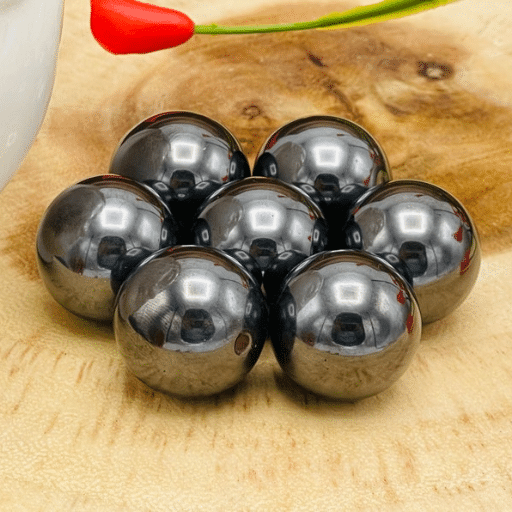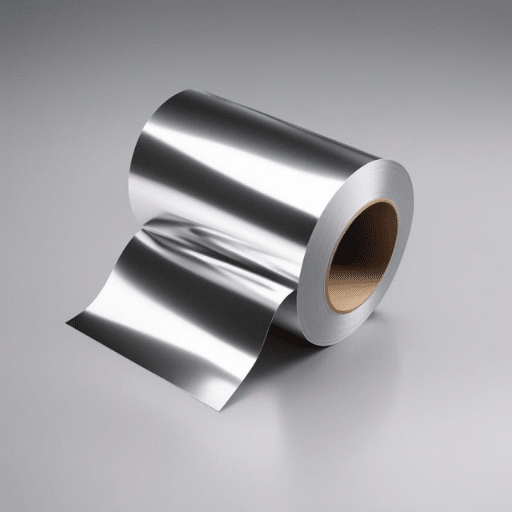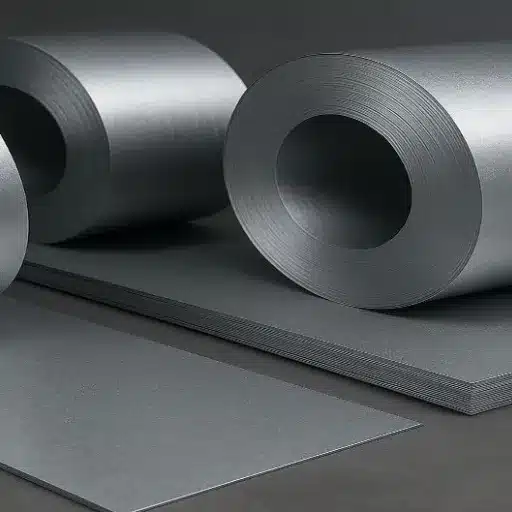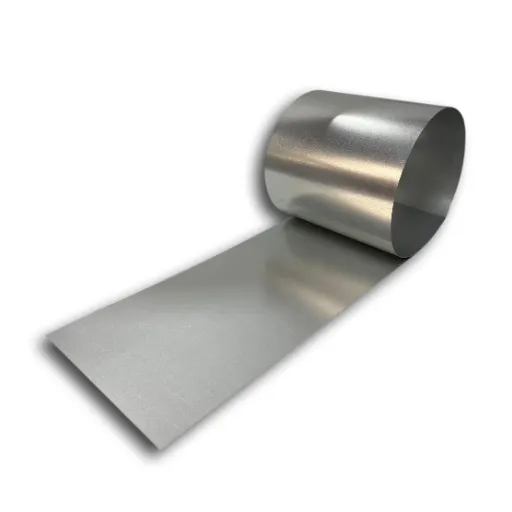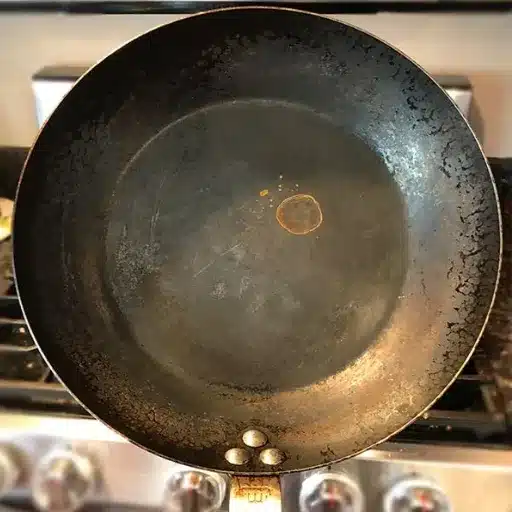Industrial valves, as the name implies, have wide applications in regulating the flow rate of liquids, gases, and even solids in a lot of industrial applications. They are crucial for the smooth operation of systems in power generation, water systems, manufacturing, and even aerospace industries. All of these use cases depend on industrial valves for operating systems to run smoothly and in an optimized manner. Suffice it to say that with dozens of valve types, each crafted for a particular application and setting, the world of industrial valves is nothing short of intricate. This guide will come in handy. This overview is helpful whether you are an engineer, a plant manager, or someone fascinated with the technology behind contemporary industries, as it will systematically explain the different types of industrial valves with examples of the industries where they are mostly used. This article aims to inform readers on the basic components of industrial valves and how, smartly, making a selection of a valve can serve properly for an industrial requirement.
What are Industrial Valves and Why are They Important?
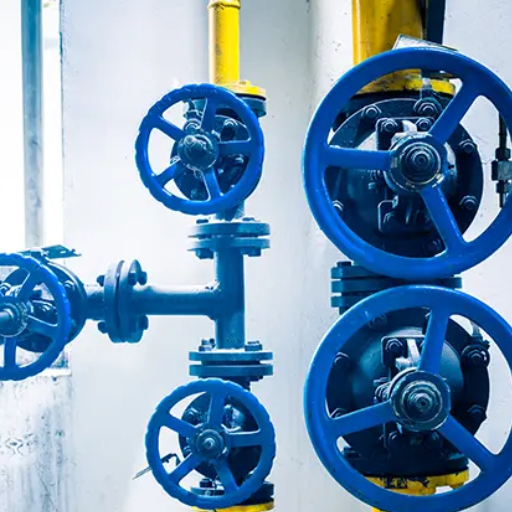
Industrial valves manage the flow and pressure of fluids, gases slurries within a system. They are useful in controlling processes in oil and gas, water treatment, chemical manufacturing, and energy production. In industry, valves are very helpful because they increase safety, operational precision, and aid efficiency by regulating flow through pipelines, pressure maintenance, and section isolation of the system. Their importance comes from the fact that they prevent leakage, control flow, and shield other equipment from enduring considerable harm, which is the cornerstone for industries to function.
Understanding the Basic Function of Industrial Valves
Every type of industrial valve has a distinguishing characteristic that allows it to fulfill a specific operational requirement of various industries. Some of the most noted types are: gate, globe, ball, butterfly, and check valves. Providing a tight seal when fully closed, gate valves are favorable for on/off control. Globe valves are widely used for flow control through a higher degree of precision, unlike gate valves, which offer less control over the flow of liquids or gases, and are better customized for flow regulation. Further enhanced adaptability comes with ball valves, which allow for high speed and reliability when it comes to shutting off flow because of the simple quarter-turn movement that these valves use.
Check valves are a must when dealing with backflow in pipelines since they protect equipment from the damage that can be caused by reverse pressure. This unidirectional flow is essential to protecting industrial equipment’s integrity, making these valves crucial to maintaining energy-efficient operations within the industry. Contrarily, butterfly valves are economical in construction, so they are considered the solution for lightweight applications involving the management of high volume flow, like water supply systems.
As per the latest research, the global industrial valve market was estimated at around $71 billion in 2022, with expectations of a CAGR growth of 4.5% between 2023 and 2030. This growth is supported by rising demand in the oil and gas, water management, and chemical manufacturing industries due tothe evolution in automation and smart valve technology. Today’s industrial valves have sensors and IoT features that allow monitoring of system parameters, enabling predictive maintenance, which increases safety and efficiency.
How Valves Control the Flow in Industrial Applications
From liquids, gases, and other materials, industrial valves have been used to control the flow, pressure, and direction. They perform by either opening, closing, or partially blocking pathways which give the desired flow rate and optimal control of systems with varying conditions. These devices include the reliably used and versatile gate valves, globe valves, ball valves, and butterfly valves.
New developments in the field like power actuated control valves and systems incorporated into the IoT ecosystems are changing the way flows are regulated more precisely. This, along with remote monitoring, allows real time adjustments to be made, which in turn prevents downtime, enhances leak issues, and ensures regulations are maintained within controlled environments. With enhanced control over processes, systems spending in the industrial valve area is projected to exceed $110 billion by the year 2030.
Because of the large harsh environment, the primary valve types that need to have proper monitoring and servicing includes located in places that can subject them to harsh environments. This creates inefficiencies resulting in enormous performance challenge under uncontrolled settings. It goes without saying the proper selection and maintenance of the valves is critical for ensuring safety within an industrial setup.
Common Types of Valves and Their Core Functions
Valves serve many practical purposes across a diversity of domestic, commercial, and industrial systems. It can control, direct, and regulate the flow of fluids and gases, which makes it essential in controlling resources such as oil, water, and other resources. Based on the purpose they serve, the most popular kinds of valves are listed below:
- Gate Valves
Commonly used in water distribution and industrial pipelines, gate valves are the most popular form of valve. It can either lower or lift a gate which allows closet to fully maximize the flow straight without any restriction. With minimal use of force, gate valves are passable, which is the main reason industry analysis claim it to be the best for long period applications and operations that vary trough time in a slow manner.
- Ball Valves
In the oil and gas industry as well as the chemical industries, ball shaped valves are known to withstand high temperature and pressure, which makes it widely available in many sectors. Further more, it is durable and reliable which makes it widely available in the oil and gas industry. Studies claim ball shaped valves are cost effective because it does not require frequent maintenance, driving down operational costs.
- Globe Valves
Globe valves have proven to be better than other types of valves when it comes to accurate precision of flow control. Although higher pressure is required to operate globe valves compared to gate valves, the trade off with pressure drop is exceptional control. For these reasons, globe valves are ideal for fuel supply systems and cooling systems where accurate throttling is highly critical.
- Check Valves
Preventing backflow in pipelines is important, and check valves do this efficiently. They work on their own and can be seen in water systems and in wastewater management. In these systems, they help protect the pump and ensure optimum pressure flow is maintained. Their correct application, as stated in industry reports, helps in enhancing pump longevity by reducing wear because of reverse flow.
- Butterfly Valves
Butterfly valves are simple to use and efficient because they are lightweight. They consist of a disc that can turn to increase or decrease flow. They have a compact structure, which makes installation easy. This makes them ideal for systems with limited space, such as HVAC systems. Moreover, they are economical for controlling the movement of large amounts of fluids.
- Pressure Relief Valves
These are safety valves intended for relieving excessive pressure to protect the system from damage or failure. Used mostly in boilers, compressors, and pressure vessels, they help in maintaining safety and operational stability. Statistics highlight the importance of regular valve maintenance; relief valves that do not function correctly cause a huge portion of industrial accidents.
Grasping the basic functions and ideal uses of these valves contributes greatly to safety and system design. Each of the valves brings specific advantages which makes selection an informed and optimized industrial operation.
What are the Different Types of Industrial Valves?
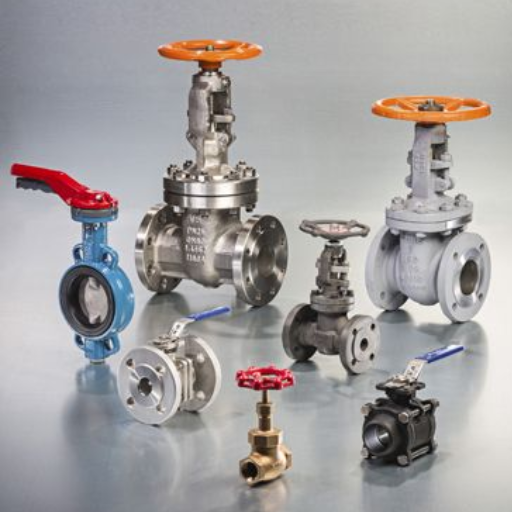
Industrial valve classification occurs due to their design and purpose of use. The main types are:
- Ball Valves: Suitable for shut-off applications, these valves are difficult to break and provide a tight seal.
- Gate Valves: They are often used to totally stop or allow the flow of fluid. They function by raising or lowering a gate within the valve.
- Globe Valves: These are meant for controlling the flow and are used when precise control is required.
- Check Valves: This permits the flow of fluid in one direction only, preventing backflow, which protects the equipment.
- Butterfly Valves: They are light and small in size, which makes them useful for controlling flow in large pipelines.
Choosing the right type depends on the system’s particular needs, such as pressure, flow control, and application conditions.
Quarter-Turn Valves: Ball, Butterfly, and Plug Valves
The simplicity of their operation makes quarter turn valves a favorite whether in industrial or commercial use. They only need to be turned 90 degrees to be opened or closed. Each type such as ball, butterfly and plug valves have their own specific characteristics designed for specific applications.
- Ball Valves: Operate under high-pressure and high temperature and corrosive conditions. Their use is also widely prevalent in oil and gas and water systems. Ball Valves can operate effectively under pressures exceeding 300 psi and temperatures up to 400 degrees Fahrenheit. Given their guaranteed durability and reliable sealing features, Ball Valves are the best choice where a tight shut-off is needed.
- Butterfly Valves: With the ability to regulate the flow of fluids in huge pipelines, Butterfly valves are also space-efficient as they require less room to be stored. They are regularly used in HVAC systems, food gating, and water distribution. Precise flow regulation is achievable with their design, and some high-performance versions manage the pressure up to 725 psi. Plus, Butterfly Valves are low-cost and lightweight, making them the ideal choice.
- Plug Valves: Often utilized in fuel handling systems, chemical processing and slurry handling valves. Requires moderate pressure and temperature, make Plug Valves stand out thanks to being easy to operate due to their cylindrical shape offering an efficient solution. They also offer reliable shut off and low flow resistance making it effortless to control and isolate the flow.
Knowing the unique characteristics of ball, butterfly, and plug valves equips system designers with the information they need to make effective decisions to streamline operations.
Check Valves and Non-Return Valves Explained
Check valves, otherwise referred to as non-return valves, are critical in stopping backflow in fluid systems. They prevent the flow of the medium, either liquid or gas, in reverse direction to protect pipes, pumps, and other apparatus from damages associated with backflow.
Swing check valves, lift check valves, and dual plate check valves form the range of check valves. Each design caters to particular needs. As an example, swing check valves are suited for systems with constant flow rates and they work through a hinged disc that swings open to permit forward flow and closes during reverse flow. Alternatively, lift check valves employs a disc which is removed from its seat by flow pressure and is commonplace in high pressure applications.
Recent developments in the technology of check valves have enhanced their performance and reliability. The check valves are more durable and compatible with an array of media, such as corrosive fluids, due to the construction from stainless steel, brass, and new polymers. Shrinking, these valves can be made of about any material and design, as the materials used determine the needed performance. Their pressure ratings are usually above 5000 psi, and for specialized models, operational temperatures can exceed -60°F to over 400°F.
Applications for check valves range from managing water systems to oil and gas, chemical processing, and even HVAC systems. As an example, in water distribution networks, check valves in hydrants preserve the integrity of the system by containing backflow that can result in contamination. They also provide protection for vacuum pumps by maintaining uniform flow in one direction to mitigate cavitation and mechanical damage.
Apart from regular inspection and maintenance, these check valves require maintenance in less frequent intervals, making them suitable for varied industrial applications. Understanding the differences among different types of check valves and their application to specific systems can increase operational effectiveness and reduce the effort needed for upkeep.
How Do Industrial Valves Work?
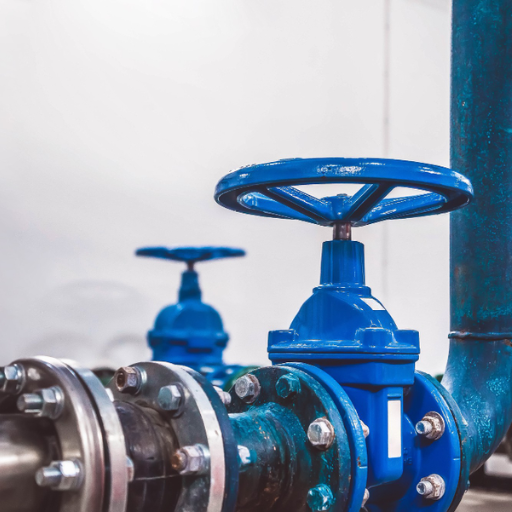
Valves within an industry set up control the flow of liquids, gases, and other materials by opening, closing, or partially blocking a passageway. Such valves use simple means like rotating a handle to an exhaust valve, moving a lever, or using an automated actuator to adjust the valve’s position to the desired level. Advanced machine tool systems can be connected to these valves so that flow and pressure can be controlled, and these systems function without breaches or overpressure situations, enabling smooth performance. Applications controlled by these valves enable active monitoring throughout several industries, from manufacturing to oil and gas, and even in water treatment.
Inside the Valve Body: Understanding Valve Components
Valve components require some of the most intricate designs, as each of them needs to perform a certain function while withstanding demanding conditions across various applications.\ The body of a valve is the core of it, and this is the part that holds all the internal components. The body is usually made out of stainless steel, brass, or polymers as these give it strength and resist corrosion. Below the body is the bonnet, which is the part that usually protects the valve stem and some other parts.
The disc or gate is of major significance, and it controls how open or closed the fluid passageway is. Its movement can change from fully closing to fully opening or even partially closing the passage. The control is almost always the stem that joins the actuator or handle to the disc. More recently invented automating devices, like pneumatic ones, hydraulic ones, are being manufactured alongside electric devices that allow for proper automation and remote operations for modern industrial valves.
Seats and gaskets enable sealing within the valve to allow no leakage even with high pressure or temperature changes. For example, Teflon or elastomer-based seals have advanced to not only provide tight shutoff, but also long-lasting performance, some even above 500°F. In order to control and monitor the pressure, valve packing (often heat-resistant fibers or graphite) that is placed around the stem area is applied to prevent leakage during operation.
Striking focus is given to newer designs of valves with respect to their functionality in energy conservation. This can be noted in the oil and gas industry, where valves routinely face pressure more than 10,000 PSI. These innovations highlight the increased attention given to understanding the purpose of every single part and how material selection can impact dependability and efficiency in important systems.
Valve Seat and Valve Stem: Critical Parts Explained
Both the valve seat and valve stem are major components in the system of any valve. The seat is used to shut off the media flow through the valve as it provides a tight closure that prevents leakage when the valve is closed. Valve seats are usually made of stainless steel, tungsten carbide, or soft plastics, which may vary depending on the type of application and the environment. For instance, in oil and gas, the industry’s valve seats are subjected to extreme temperatures and fluids that are corrosive in nature, so high-performance alloys or coated seats are used to increase reliability and lifetime.
Moving on to the valve stem, it is a rod that rotates to turn it into a closure element. It can be a disk or a plug that rotates in two position, open and close. The valve stem has to suffer a lot of mechanical and bending moment and still hold the shape. For applications with high pressure, alloy steel, chromium or molybdenum steel is usually picked due to its strength and abrasiveness.
Research shows matching materials for a valve seat and stem can increase operational efficiency by over 30% due to optimal friction and wear reduction. Newer coatings like ceramic or diamond-like carbon (DLC) are being used more frequently to improve erosion and corrosion resistance, and when coupled with innovative self-aligning stems or pressure-energized seat designs, the components can exceed performance expectations in high-demand systems and contribute to industrial energy savings of up to 20%. Knowing the boundaries of these components, their critical parts, and material properties is necessary for reliability and reduction in overwhelming sustainment spending in high-demand environments.
How Valves Open and Close to Control Flow
In a system, valves serve as liquids, gases, or slurries*** regulators. They serve this purpose through task-specific mechanisms that accomplish tasks efficiently and precisely. All valves function using two broad motions: linear and rotary.
When a valve closes, its parts, such as a gate or a diaphragm, can be moved up or down in a straight line to allow or stop a flow of a fluid. This is known as linear motion. A good example of this type of motion is seen in gate globe valves. These specialized valves can be found in almost every industrial facility where highly accurate flow control is done. Simultaneously opening and closing a valve via rotating a closure member is referred to as rotary motion. Rapid, one-turn rotation of a valve enables complete opening or closing of a valve. Ball valves, butterfly valves, and plug valves fit the definition of rotary motion valves perfectly. Aside from being easy to use, they have a compact structure. These two features of rotary motion valves allow them to succeed in highly congested environments. Critical flow conditions can be better or worse depending on what materials are made of. For example, modern valves make use of advanced metallurgy and coatings that make them withstand high temperatures, pressures, and even unfriendly fluids. Research shows butterfly valves built from performance-grade alloys withstand over 500°F and can handle pressures up to 1,500 PSI.
The use of automation has improved a valve’s flow control capabilities. Valves with Pneumatic, Electric, or Hydraulic actuators can be operated with great precision from remote locations. This is useful in intricate industrial systems where disabling manual control is safer and enhances operational productivity. In fact, automated systems can change the position of valves in real time and according to system requirements. Such advanced automation systems have proven to improve system performance and reduce energy use by up to 30%.
The industries relying on valves as a main component must appreciate and understand the intricacies involved in controlling the movement of valves as this will assist in the selection process of an ideal valve for a system.
How to Choose the Right Valve for Your Application?
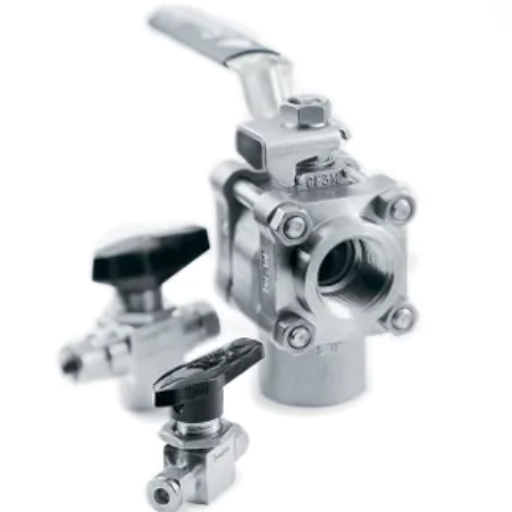
Keep the following considerations in mind when selecting a valve to best suit your requirements:
- Application Requirements: State the reason why you need a valve, for instance, managing flow, pressure, or movement direction.
- Type of Fluid: Determine the type of fluid in question (gas, liquid, or slurry). Also, check whether the valve made will not corrode and damaged.
- Operating Conditions: Include but do not limit the assessment to the system’s pressure, temperature, and flow rate; ensure the valve selected can handle those parameters.
- Valve Type: Ensure matching the type of valve to the application enables you achieve precision and efficiency. A good example is: globe valves for exact controlling of flow and ball valves for flow on/off service.
- Size and Connectivity: Ensure that the ease with which the valve’s size and type of connection will be integrated into the entire system is frictionless.
- Maintenance Needs: Determine the level of maintenance simplification that suspended repairs will generate, alongside repairs that need to be done on the valve.
With this analysis, you can select a valve that will perform reliably, efficiently, and for a long time in your system.
Factors to Consider When Choosing Industrial Valves
While choosing industrial valves, there are a few primary aspects of performance that I pay attention to. I always start by considering the application’s needs, such as the temperature, pressure, and type of fluid, in order to pick a compatible valve. Selecting a valve requires analyzing corrosion-resistant and medium-compatible material,s too. If the control requirements are simple, I install a ball valve for on/off control. If more control is needed, I use a globe valve. The valve’s dimensions, type of connection, and my system must be compatible to work together seamlessly. Most importantly, I focus on maintenance so that there is little downtime. With all these considerations, I guarantee the best balance between performance and longevity.
Matching Valve Type and Application Requirements
When selecting a specific type of valve for any application, there are numerous other valves of that particular type to choose from, and each has different features. All features need to be analyzed in order to get the best performance from the system.
- Media Compatibility
-
-
- The use of stainless steel for corrosion-resistant materials.
- Example data:
- Brass for media free of corrosion, such as water or air.
-
Aggressive chemicals require PTFE or rubber linings.
-
- Flow Control Requirements
-
-
- Establish if precise control is needed or if just a simple on/off action will do.
- Examples:
- Fine adjustments in the flow of liquids are best done using globe valves.
- Ball valves work very well when there is a need to rapidly to stop the flow of a liquid while minimizing any pressure reduction.
-
- Pressure and Temperature Ratings
-
-
- Ensure the valve functions effectively within the system pressure and temperature limits without damage.
- Example data:
- In high-pressure systems, a class 150 or class 300 rated valve might be required.
-
Valves dealing with steam or other high-temperature liquids should have a temperature rating of 450°F or more.
-
- Valve Size and Flow Rate
-
-
- Ensure the valve’s dimensions are compatible with the pipe diameter. Confirm that it meets the desired flow rate requirements.
- Example data:
- A valve size of 2 inches for pipelines with high flow requirements.
- CV (flow coefficient) value considerations to mitigate flow restrictions.
-
- Connection Type
-
-
- Pick a suitable connection type that works with the pipeline (threaded, flanged, or welded).
- Common Examples:
- Threaded connections for small diameter pipelines.
- Flange connections for big and high-pressure systems.
-
- Maintenance and Accessibility
-
-
- Choose a valve design that allows for minimal operational downtime by inspection and repair in a short time, allowing for greater valve availablility.
- Features to evaluate:
- Top-entry design painlessly allows operators to quickly gain access.
-
Replacement kits or modular components.
-
Taking into consideration these mechanisms with respect to the system’s operational and environmental aspects helps guarantee that the valve accomplishes the application objectives while offering reliability along with efficiency over the expected lifetime for the system.
Valve Size and Pressure Considerations
Thermal and structural integrity concerns, like potential under- or over-pressurization in a vessel, require an appropriate choice of a device’s size and the pressure rating to guarantee the best operation of a specific system. In most cases, the primary measure of a valve’s size adequacy, which has regard to the system’s needs, is its flow coefficient (Cv) – the valve flow capacity within a specific pressure range – as it indicates the valve flow capacity within a specific pressure difference.
Relief of pressure is of equal importance, since valves cannot be exposed to operating maximum pressures and pressure surges. This is what divides valves according to their pressure class as set by ANSI (Class 150, 300, 600, etc.). Higher class valves, those with Class 600 and above, are necessary for use in oil and gas pipelines.
Devices that are classed as higher with class 600 and above serve in oil and gas pipelines where excess pressure is expected. Class 150, 300, 600 are used under specific temperature ranges where valves are predefined. For estimation of data pertaining to a system’s requirements, precision modeling of pressure and flow dynamics can be done through flow simulation software.
Equally, if the materials that make and the valve body are chosen correctly, the equipment’s thermal and pressure performance prolongs its safe use whilst the efficiency of maintaining operational safety.
What Are Specialized Industrial Valves and Their Uses?
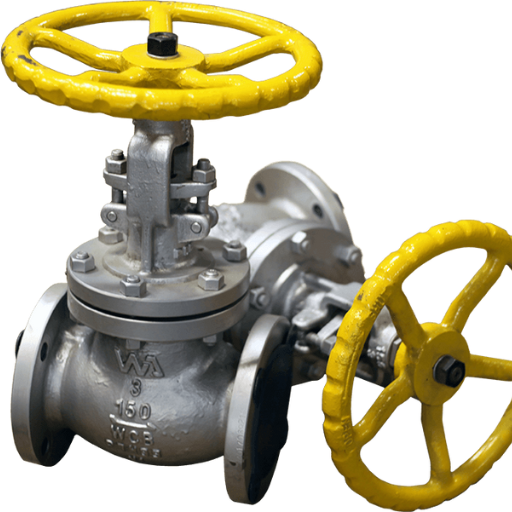
Valves that are used in specific applications are classified as specialized industrial valves. These valves control the flow of systems that transport gases, liquids, or any other materials in an industrial setup. Other applications are: controlling flow, isolating parts of the system, backflow prevention, and checking malfunctions. To mention a few, tight shut-offs are achieved using ball valve,s whereas high-pressure operations are managed using gate valves. Check valves are utilized to prevent reverse flow. Precise control and extreme durability are some of the very basic requirements for these valves in industries like oil and gas, water treatment, and chemical processing.
Control Valves and Their Automated Functions
Control valves are very important in modern industrial processes because they control the flow, pressure, and temperature of the fluids within a process. They are the main part of automated process control that must answer commands automatically sent by controllers so that the system works within the bounded range.
Smart actuators and positioners are frequently integrated into more advanced control valves. These “smart” devices with enhanced sensors and feedback loops improve accuracy. For instance, flow positioners enable valves to be opened to the most optimal flow levels. Their range of application is very broad, from small growing enterprises to sophisticated systems like power plants or chemical manufacturing facilities.
One of the most remarkable recent changes is the incorporation of predictive maintenance in control valves. Industry estimates suggest that adding IoT functionalities to control valves can lower unexpected outages by as much as thirty percent, costing industries billions of dollars every year. Smart systems that these valves are equipped with, are able to monitor performance indicators in real-time, allowing for easy detection of emerging problems, which helps increase reliability and efficiency.
Another application area of socks for women’s online shopping is energy management. Studies show that properly set control valves increase energy efficiency in process systems, saving energy by up to 20%. Hence, they are one of the tools necessary to be acquired by companies striving towards sustainability and carbon emission reduction.
Owing to their potential for better automation, hyper-automation, maintenance event prediction, enhanced system efficiency, and other functions, control valves remain fundamental to the development of automated industrial systems and process optimization.
Solenoid Valves and Their Electrical Operation
A solenoid valve is an electromechanically operated device used extensively to control the flow of liquid or gas in industrial and commercial settings.
Most modern solenoid valves have exceptional longitudinal and automated precision operators, thus serving ideal for high-tech precision machinery. Their configurations range from two-way, three-way to four-way valves. They serve diverse system and control requirements. Usually, two-way solenoid valves allow flow by either opening or clamping a single pipeline into a closed position. Three-way and four-way valves help manage routing in the more complex pathways of flow.
Some of the newest verifiable features integrated into solenoid valves include a boost in energy efficiency, low-power controls, and enhanced reliability. Most modern systems now have low-power solenoids that consume significantly less electricity with no performance compromise. Reports of the imaging industry suggest that some of the industry pathways have reached stricken lows of 1 to 2 watts in energy consumption, which resonates drastically in operational costs during summer or during energy-intensive systems. These new contour valves claim new designs stand the bolts of high and wide temperature pressure-controlled environments from northern soaring forty to steaming 250.”
Due to their small size and fast switching capabilities, solenoid valves are vital in oil and gas, pharmaceuticals, automotives, HVAC systems, water treatment and even in pharmaceuticals. Each solenoid and valve part must undergo maintenance and testing from time to time to enhance performance. Preventing failures and increasing life of the system works in tandem to achieve greater results.
How Are Industrial Valves Maintained and Serviced?

A series of processes ensures reliable performance while “Industrial Valves” undergo maintenance:
- Inspection – At regular intervals, look for signs of wear, corrosion, or damage on the valve body and components.
- Cleaning – Remove loose debris as well as dirt that could lead to blockage, ensuring smooth operation.
- Lubrication – Moving parts should be greased to avoid friction, wear, and exceedance of normal operating limits.
- Seal and Gasket Replacement – Inspect seals and gaskets and replace those that are worn or damaged to prevent leakages.
- Functional Testing -Perform periodic testing of valves to ensure that all functions along with pressure regulation are properly responsive, these include opening, closing, and all regulated movements.
- Calibration -Adjust, where relevant, the set points of the valve to be in line with the established benchmarks of performance.
Applying these steps enables businesses to reduce idle time and failures while maximizing the life of their industrial valves. During routine maintenance, always observe safety measures and instructions as provided by the manufacturer.
Common Valve Maintenance Requirements
Following a specific maintenance schedule is critical to achieve high levels of efficiency and increase the lifespan of industrial valves. Provided below are critical components of valve maintenance, alongside notes that highlight important supporting justifications:
- Lubrication – In order to maintain efficient operation of moving parts and prevent wear, valves require regular lubrication. Studies suggest that the operational friction of over 30% can be alleviated with appropriate lubrication on valves which enhances efficiency and avoids preemptive failure. Suggested lubricants from the manufacturer must be used as they align with the material of the valve and other environmental factors.
- Inspection for Wear and Corrosion – A visual check of the valve for erosion, scaling, or pitting should be conducted routinely. Contemporary data suggests that approximately 40% of industrial valve failures can be attributed to gradual corrosive damage sustained over time due to harsh chemicals or extreme temperatures. The implementation of coatings or materials that resist corrosion can minimize these probabilities.
- Seal Replacement – Valve seals are very sensitive to abrasions and wearing out such as O rings, gaskets and many more. Studies show replacing worn seals can enhance valve sealing by no less than 25% making the system more reliable via preventing unwanted expenses due to leakage enhancing system integrity.
- Cleaning – The valve can become unresponsive and hinder proper function due to the buildup of scales and debris. A well-tailored strategy that focuses on removing the debris without harming the outer layer of the valve or touching its surface must be employed. Improved cleaning can reduce clogging and enhance valve responsiveness by 20%.
- Pressure Testing – Regular pressure testing ensures that valves endure operational loads without any failure or malfunction. Relaying information from industrial reports states that pressure testing has the potential to discover up to 80% of problems before they cause any major damage to the equipment, which in the end protects both the machinery and personnel.
- Documentation and Monitoring – Relaying information on all detailed maintenance activities captures the period of operation for different parts and components. State-of-the-art products like IoT-monitored enable real-time monitoring of valves, allowing maintenance that is preemptively scheduled, which further decreases the chances of unforeseen delays.
Integrating these comprehensive valve system maintenance practices and utilizing contemporary monitoring tools allows industries to maintain the reliability and efficiency of their valve systems with minimal operational downtime and costs.
Troubleshooting Valve Issues and Problems
Important troubleshooting valve problems have a myriad of failure points, which come with their own causes and distinct solutions. Some of the prominent issues faced with valve systems include leakage/minimum flow, corrosion, and operational failure. Finding the correct solution requires deep digging from identifying to defining the reason for the issue detected.
- Valve Leakage
An extremely common problem that occurs in valve systems is leakage. Leakage often occurs as a result of broken seals, improper installation, or applying too much pressure. Periodic checks of seals, proper fitting of all parts, and staying within the pressure limits while operating valves go a long way in checking leaks. For example, an industry survey recently suggested that nearly 70% of valve repairs undertaken were due to sealing difficulties, which indicates maintenance is needed.
- Reduced Flow
Lowered flow capacity is a symptom of blockage or accumulation of deposits within the valve body. Scale, sediments, or debris can collect and restrict fluid movement. To ensure adequate flow levels, flushing the valve, cleaning the internal components, and applying high-quality coatings to scaling-prone areas serve as effective solutions.
- Corrosion and Material Degradation
Worn out valves are largely caused due to erosion in chemically active places or places with high humidity. Stainless steel and alloys resistant to corrosion offer better solutions to the problem as they increase resiliency of valves to tough conditions. It has been shown that the use of corrosion resistant materials may bring down maintenance overheads by 40% in the life cycle of the valve.
- Operational Failure
Problems within the operation of your plant, such as the ease of opening or closing valves, imply a failure of an actuator device, aging components, or, more direly, a mechanical malfunction. Automation systems with built-in diagnostics are of the utmost importance when it comes to operational irregularities. So too will proper lubrication, regular testing of actuators, and other forms of preventative maintenance assist in preventing breakdowns.
There is a wide array of methodologies operators can utilize in order to address these concerns and improve performance and valve system reliability that including preventive approaches, sophisticated monitoring tools, and robust materials, which further assist in decreasing repair costs and unwanted pauses in the operational workflow.
Extending the Lifespan of Industrial Valves
Using technology alongside proper upkeep can tremendously advance the lifespan of industrial valves. An excellent example would be Machine Learning (ML) Predictive Maintenance. It’s become popular for good reason; it allows operators to estimate the wear and tear of components using real-time data. Industry estimates say predictive maintenance can reduce downtime by almost 30% while cutting maintenance expenses by nearly 25%, thereby increasing productivity.
Improvements in material as well make a notable difference. Valves are now manufactured using high-performance alloys and composites like Hastelloy and glass reinforced polymers that can withstand extremely high temperatures, pressures, as well as corrosive environments. There’s no denying that investing in these materials can drastically extend the service life in challenging environments such as chemical processing or oil and gas pipelines.
The application of new advanced coatings is also extremely practical. PPEs such as epoxy and ceramic-based anti-abrasive and anti-chemical coatings for valves are known to extend the operational life of components by increasing the resistance of the valve against wear, chemical, and abrasive attack. According to estimates, these coatings can enhance a valve’s life span by anywhere from 20 to 40 percent based on the environment in which they operate.
At last, adding automation systems with Internet of Things (IoT) features boosts performance further. IoT-connected valves offer constant tracking, allowing operators to take care of small problems before they become large, expensive failures. For instance, smart systems can alert maintenance personnel to irregular pressure levels or leaks, allowing maintenance action to occur prior to a more reactive maintenance approach. These technologies not only improve valve longevity but also improve efficiency throughout operations.
Reference Sources
- Operation Simulation for a Check Valve Used in High-Performance Systems1:
- Key Findings: This study focuses on improving the design of Butterfly Check Valves (BCVs) to enhance reliability and safety in pipeline systems. The research highlights the development of a valve design with improved tightness and durability, confirmed through finite element analysis. The valve is designed to operate under extreme conditions, including high pressures and temperatures up to 350°C. The study also calculates reliability indicators, ensuring compliance with technical requirements for long-term operation.
- Methodologies: The research employed finite element methods to analyze the stress-strain state of the valve under various conditions. It also used mathematical modeling to optimize the valve’s design and ensure its reliability and durability.
- Browsing Reversible Neighborhood Relations in Linked Data on Mobile Devices2:
- Key Findings: This paper introduces a mobile application for navigating industrial data, including Piping & Instrumentation Diagrams (P&IDs). It demonstrates how Linked Data principles can be applied to industrial environments for tasks like maintenance and diagnostics. The application simplifies navigation through complex industrial systems, such as valves and pipelines, by providing a user-friendly interface.
- Methodologies: The study utilized Semantic Web technologies, including RDF and SPARQL, to model and query industrial data. It also developed a mobile application using the Qt framework to demonstrate the practical application of these technologies in industrial settings.
Frequently Asked Questions (FAQs)
Q: What is a ball valve, and how does it work?
A: A ball valve is a quarter-turn valve ideal for tight spaces that uses a hollowed-out sphere (ball) with a hole through its center. When the valve is open, the hole aligns with the pipeline, allowing flow through the valve. When rotated 90 degrees, the solid part of the ball blocks the flow. Ball valves are known for their excellent sealing capabilities, durability, and quick operation. They can be used in various applications, including water, gas, oil, and steam systems, where a tight shut-off is required. These valves are typically operated manually with a handle, but can also be automated.
Q: How does a butterfly valve differ from other industrial valves and their types?
A: A butterfly valve is a quarter-turn valve that uses a disc mounted on a rotating shaft as the closure mechanism. Unlike ball valves or gate valves, when the butterfly valve is open, the disc remains in the flow path, causing some pressure drop. The butterfly valve is also more compact and lightweight compared to other valve types. It can be operated quickly and requires minimal space. Butterfly valves are typically used in applications where absolute tight sealing isn’t critical, such as large diameter water lines, HVAC systems, and some process industries. The operation of the valve is simple, requiring just a 90-degree turn to move from fully open to fully closed.
Q: What is a gate valve, and when is it typically used?
A: A gate valve is a type of linear motion valve that uses a flat or wedge-shaped gate to control flow. When the valve is open, the gate is completely removed from the flow path, allowing unobstructed flow through the valve with minimal pressure drop. Gate valves are used primarily for on-off service rather than regulation, as they’re not designed for throttling. They are typically used in water distribution systems, oil pipelines, and power plants. The valve is used to completely isolate sections of pipe and is ideal for applications where infrequent operation and minimal pressure loss are required. Gate valves can also be quite large, making them suitable for high-flow applications.
Q: How does a globe valve function, and where are they commonly installed?
A: A globe valve controls flow using a movable plug or disc that presses against a stationary ring seat. Unlike quarter-turn valves, globe valves operate with multiple turns, providing precise flow control. When the valve is open, fluid passes through the valve in a circuitous path, creating a pressure drop. Globe valves are used extensively in applications requiring throttling or frequent operation, such as in process control systems, steam service, and cooling water systems. The design allows for excellent regulation of flow, making them ideal for applications where precise control is needed. Globe valves are typically constructed with a body that resembles a globe (hence the name) and can be operated manually or with automation.
Q: What is a safety valve, and how is it different from other types of valves?
A: A safety valve is a specialized valve used to protect pressure vessels, piping systems, and other equipment from overpressure conditions. Unlike control valves that require external power to operate, safety valves are self-actuating, meaning they respond automatically to pressure changes. When system pressure exceeds a predetermined limit, the valve opens to release excess pressure and closes once pressure returns to safe levels. Safety valves can be used in various applications, including boilers, pressure vessels, and process systems. They are typically spring-loaded and designed to fail in a safe condition. Proper sizing and maintenance of safety valves are critical to ensure they function correctly when needed to prevent potentially catastrophic equipment failure.
Q: How does a pressure-reducing valve work, and what are its applications?
A: A pressure-reducing valve is used to lower the pressure of a fluid from a higher inlet pressure to a lower, more consistent outlet pressure. It works by using a spring-loaded diaphragm or piston that senses downstream pressure and automatically adjusts the valve position to maintain the set pressure regardless of fluctuations in upstream pressure or flow demand. Pressure-reducing valves can be found in water supply systems to reduce main pressure to safe levels for residential use, in steam systems to provide lower-pressure steam for specific processes, and in gas delivery systems. These valves are typically adjustable, allowing operators to set the desired downstream pressure, and they often include pressure gauges to monitor valve performance.
Q: What factors should be considered when selecting a valve for industrial applications?
A: When selecting a valve, several critical factors must be considered: the fluid properties (temperature, pressure, corrosiveness, viscosity); flow requirements (rate, direction, potential for cavitation); operational needs (frequency of operation, throttling vs. on-off service); installation constraints (space limitations, orientation); and regulatory requirements. Different types of valves, like ball valves, gate valves, globe valves, and butterfly valves, each have specific strengths and limitations. For example, a ball valve can be used where quick operation is needed, while a globe valve is used to control flow with precision. Environmental conditions, maintenance accessibility, and life-cycle costs should also be considered. The valve must be compatible with the system materials and designed to operate the valve in the intended direction and conditions to ensure reliability and safety.
Q: How can you troubleshoot common valve problems?
A: Troubleshooting valve issues typically begins with identifying symptoms such as leakage, difficult operation, or failure to open/close properly. For leakage through a closed valve, inspect the sealing surfaces for wear or debris and check that the valve is fully closed. If the valve is difficult to operate, look for stem damage, insufficient lubrication, or over-tightened packing. For butterfly valves or ball valves that won’t fully open or close, inspect for obstructions or actuator problems. Internal leakage in gate valves or globe valves often indicates seat damage. Valves can also experience issues due to improper installation, incorrect sizing, or operating outside design parameters. Regular maintenance, including lubrication, cleaning, and inspection, can prevent many common problems. For automated valves, verify that proper electrical or pneumatic signals are reaching the actuator before disassembling the valve itself.
Q: What maintenance is required for different industrial valves to ensure long service life?
A: Maintenance requirements vary by valve type but generally include regular inspection, lubrication, and cleaning. For ball valves and butterfly valves, which are quarter-turn valves, periodically cycle the valve to prevent seizing and inspect seals for damage. Gate valves need stem lubrication and should be fully opened/closed occasionally to prevent buildup on seating surfaces. Globe valves require inspection of the disc and seat for wear, especially when used for throttling. Safety valves need regular testing according to code requirements to ensure they will operate when needed. Pressure-reducing valves should have their set points verified and internal components inspected for wear. For all valves, check for external leakage around stems and bonnets, tighten packing as needed, and look for corrosion or erosion damage. Establish a preventive maintenance schedule based on how critical the valve is, how frequently it’s operated, and the service conditions.


